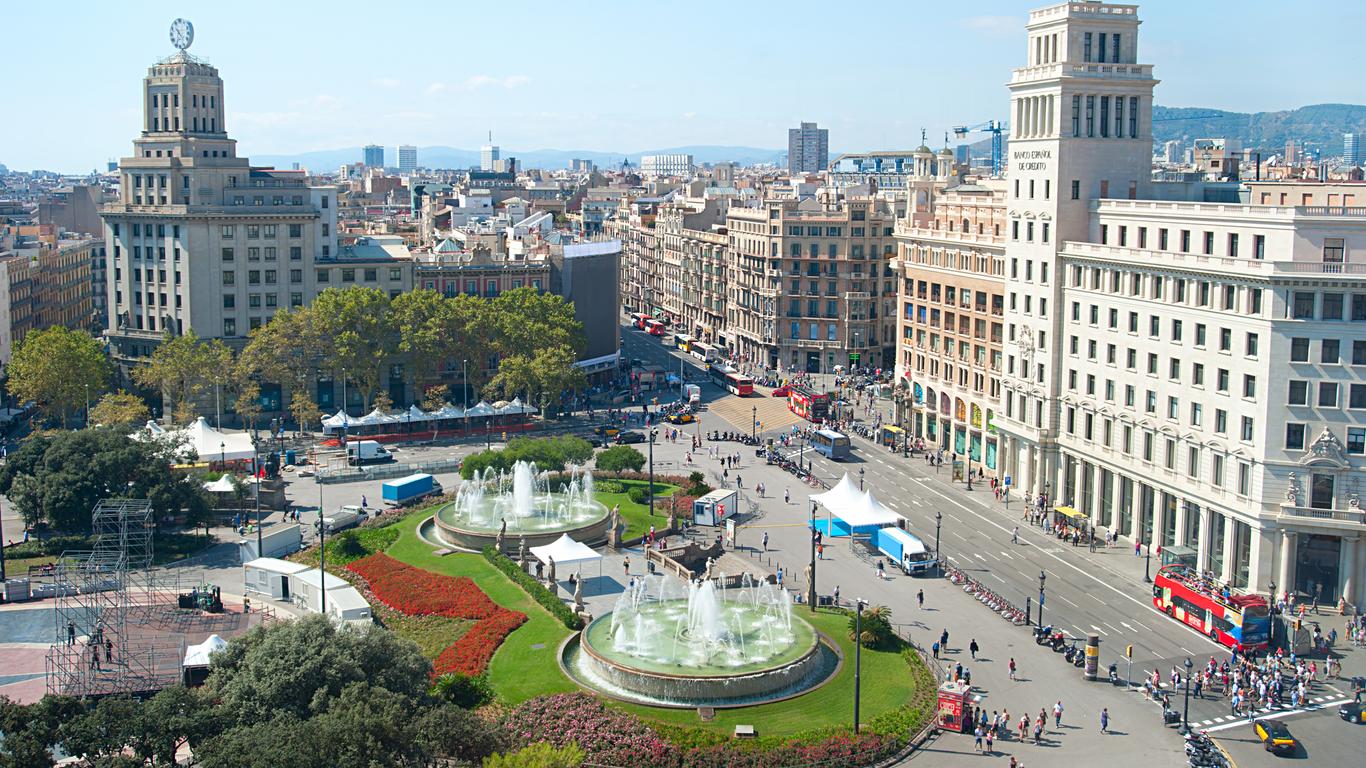Lined with avant-garde architecture, Placa de Catalunya is Barcelona’s busiest square. It’s anchored by bubbling fountains, elegant statues and leafy trees, with its central benches serving as a great place to people watch or seek shade from the Spanish sun. Simply strolling around the square is an experience in itself, with sculptures like the Monument a Francesc Macià and La Deessa o l'Enigma always a favourite with snap-happy tourists.
Nine streets branch off Placa de Catalunya, including La Rambla promenade and the Passeig de Gràcia. The latter is home to Barcelona’s finest examples of modernist architecture, including masterpieces dreamt up by the father of the Spanish Art Nouveau movement, Antoni Gaudí. As the point where the old city meets the Eixample neighbourhood, Placa de Catalunya is a popular meeting point for locals.
As a central transport hub, Placa de Catalunya is well-serviced by both buses and trains. Below its footprint, visitors can access three metro lines and a city railway line. Four lanes of traffic circle its borders, which make it busy, noisy and at times, chaotic. The square is also a major pickup/drop off point for airport express and tourist buses.
While today Placa de Catalunya is the beating heart of the Catalan capital, it wasn’t always so hectic. Until the mid-19th century, it was a rural area that wasn’t even considered part of the city. However, in 1858 this all changed, when Madrid’s central government agreed to demolish the city’s defensive walls. A public competition was held for designs to expand the city, with Catalan architect Josep Puig i Cadafalch winning over judges with his extravagant blueprints.





